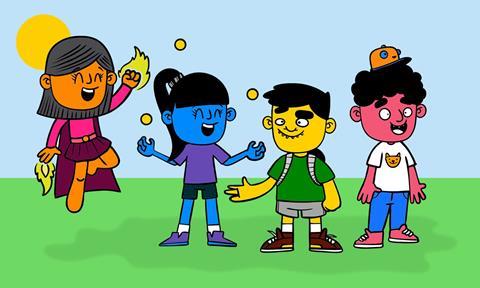Are you planning a holiday club for this summer? Many churches will be running one for the first time since the pandemic and if that’s your church too, then you’ve got a golden opportunity to use it as a way to become more inclusive of children and young people with additional needs.

As you plan for those few days of a holiday club, here are some practical things that you can introduce that might then extend into your children’s and youth work after the summer holidays.
1 Carry out an accessibility audit of your setting
Before you run your holiday club, have a wander around your setting. If possible, take a disabled member of your congregation with you to give you a different perspective. Identify any physical barriers that might be an issue for a child or young person with additional needs who is coming to your holiday club and think about how to reduce or remove these barriers.
Here’s a downloadable checklist that you can use to help you identify some of the key barriers that exist in many churches.
You can find out more about the ‘Invited to Belong’ programme that this checklist is a part of here.
2 Recruit some one-to-one helpers
Most children’s and youth teams are crying out for more volunteers, but a holiday club offers an opportunity for people to try out their volunteering without committing long term. Asking someone to help at a holiday club for a few days is very different to signing someone up to serve in the children’s team permanently. This is a great way for people to have a go at something that they might be unsure of, like being one-to-one helpers for children or young people with additional needs. They will hopefully really enjoy it, find it rewarding and want to continue to help after holiday club has finished!
3 Think about young people as ‘buddies’
Another approach to providing support to children and young people with additional needs is to ask other young people to be their ‘buddies’. With appropriate supervision, young people with a caring, pastoral approach can be great at supporting their peers and again a holiday club offers a short-term way of giving this a try.

4 Use inclusive songs
As you plan the content for your holiday club, how about finding versions of the songs that include subtitles and signing? It’s a great opportunity to build up a library of songs that everyone can join in with, and you can continue to use these inclusive versions once holiday club is over.
A great place to start would be to have a look at holiday club maestro John Hardwick’s website and his YouTube channel.
5 Use inclusive stories
Most of us use parachutes in our holiday clubs, as we sing songs or as we play games, but have you ever used a parachute to tell Bible stories? Through The Roof have a great resource called Parachute Bible Stories that helps us to inclusively tell 20 Bible stories using a parachute. It’s really accessible, works with children and young people of all ages and abilities, and is great value at just £5 a copy.
“Think about how to reduce or remove barriers”
6 Resource yourselves for the future
Holiday clubs give you the opportunity to try out other inclusive resources that I’ve mentioned previously in this column, such as using one-page-profiles to get to know the children and young people better, social stories to introduce them to the holiday club and visual timetables to help them know what is happening now and next. These and other resources can also be found in the resources area of the Additional Needs Alliance website.
Once you’ve got into the habit of using these resources at a holiday club, you will see how invaluable they can be and will start using them every week!
7 More training and support for your team
If you would like to know more about how to make your holiday club and your children’s and youth work generally more inclusive, then I’ve created a playlist of helpful videos to watch. There are lots of tips, ideas, information and support for you to explore individually or as a team.
I hope these ideas get you started on your journey to make your holiday club as accessible and inclusive as possible, and that using them at holiday club will encourage you to keep going with them when your children’s and youth work restarts in autumn term as well!











































